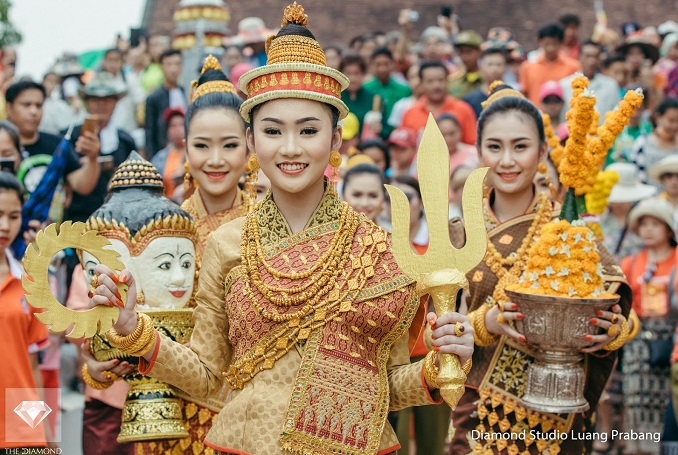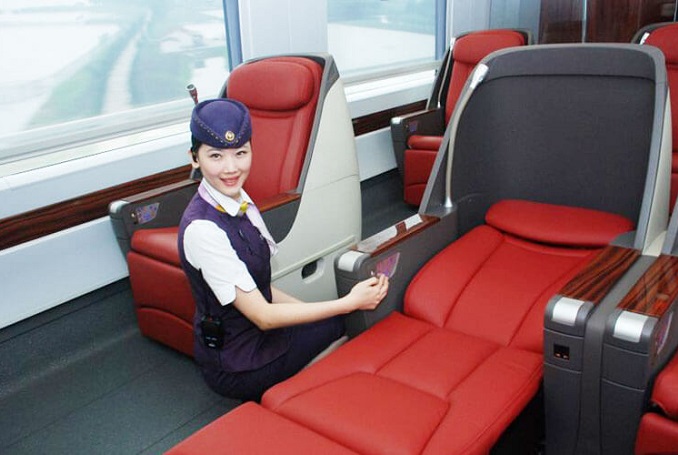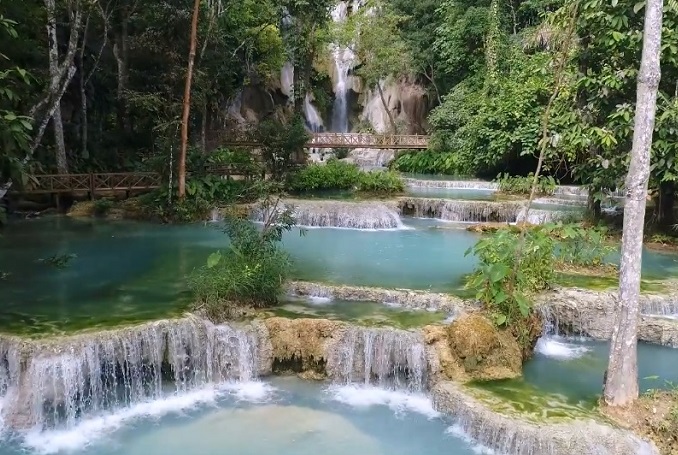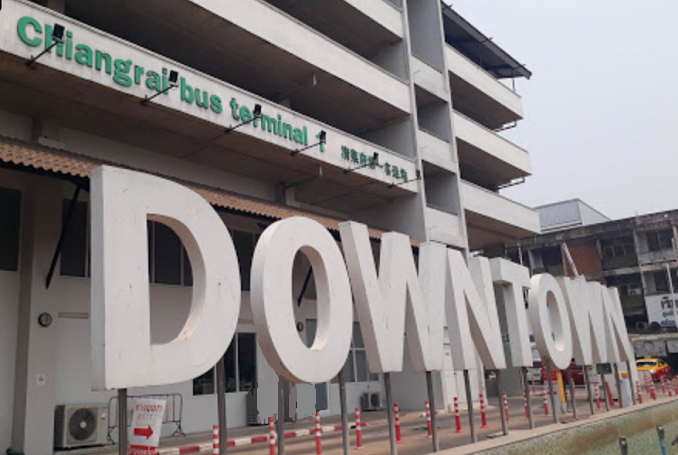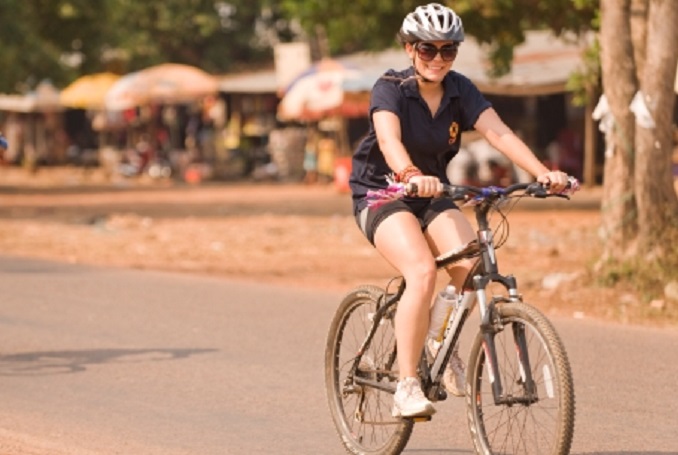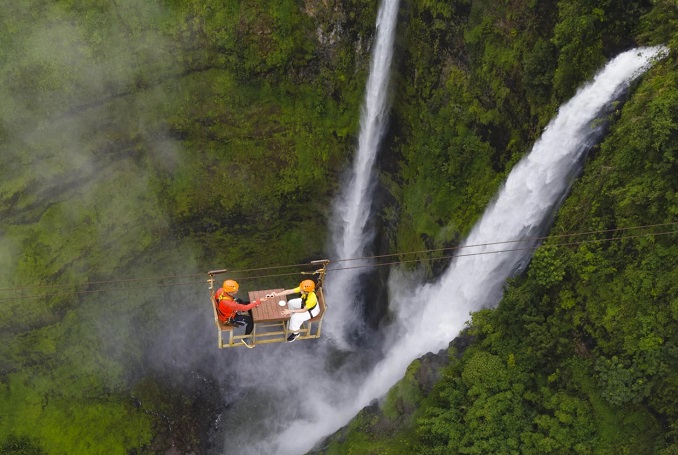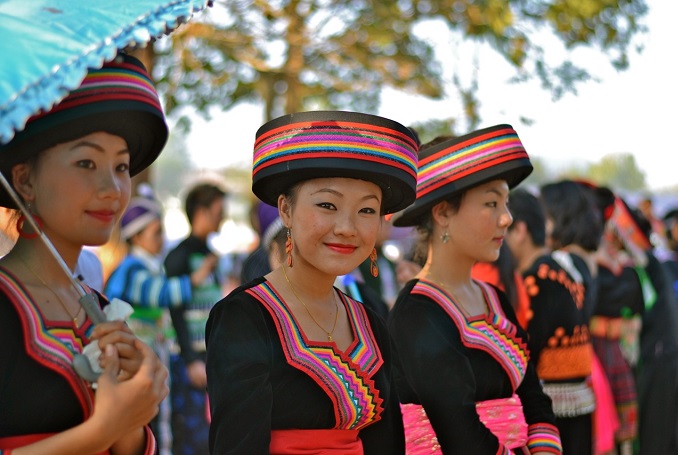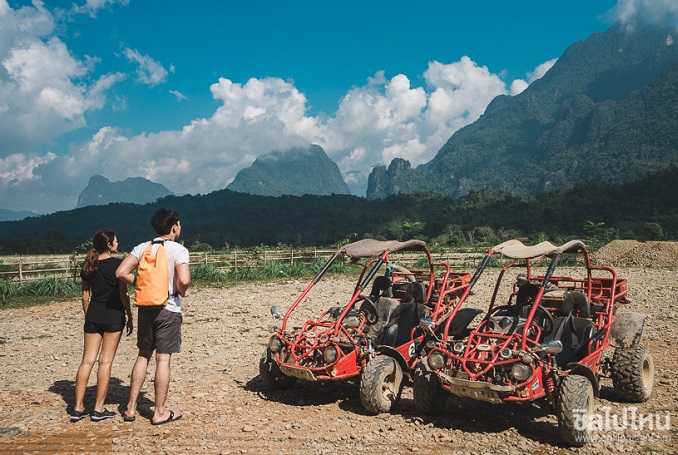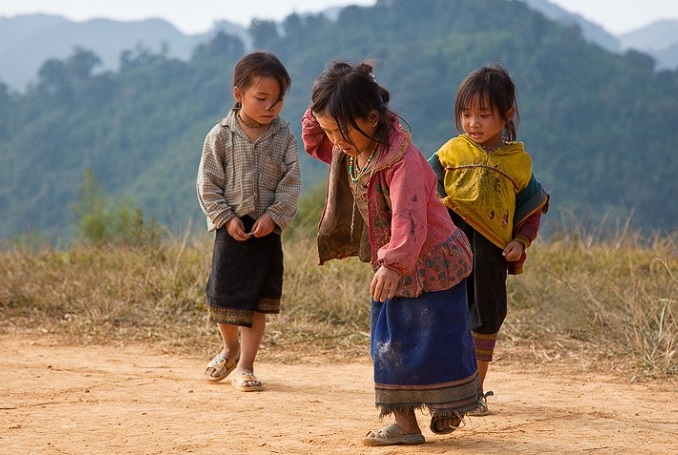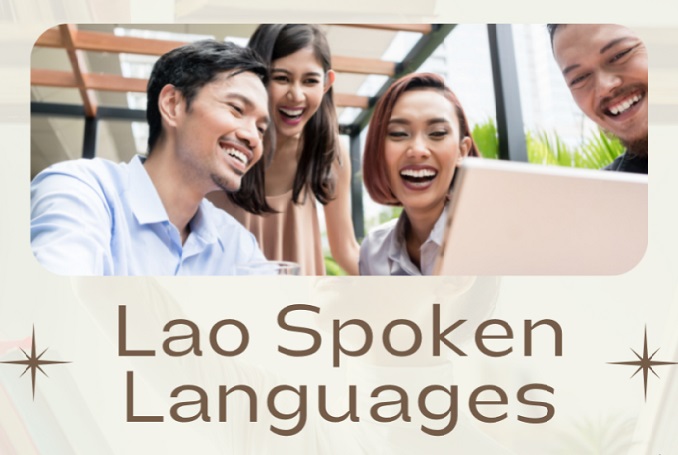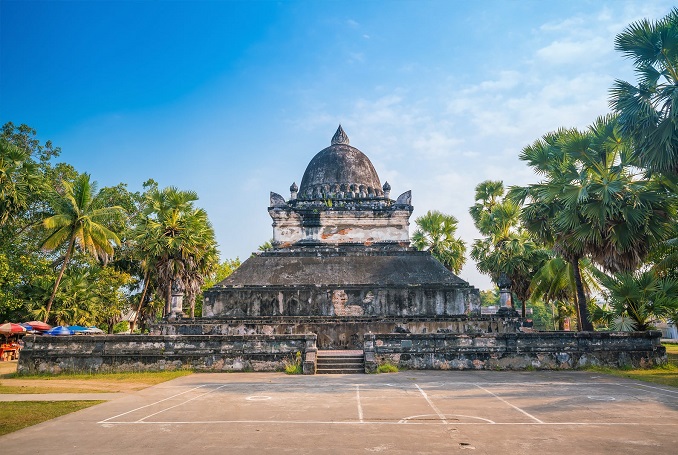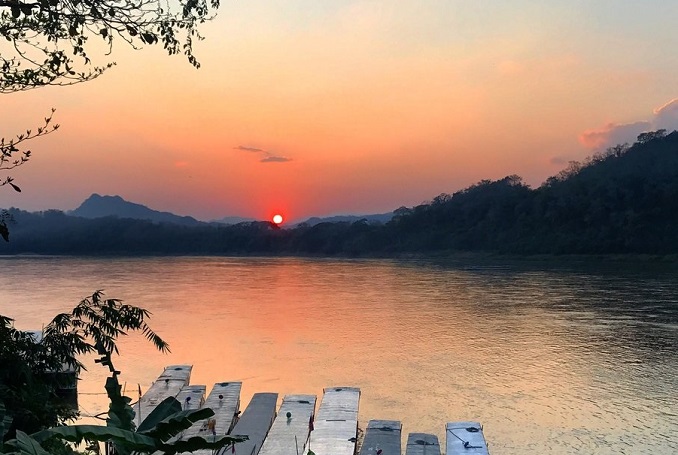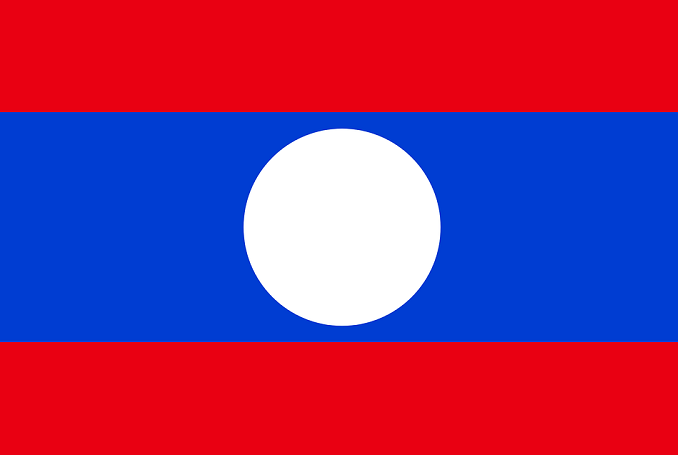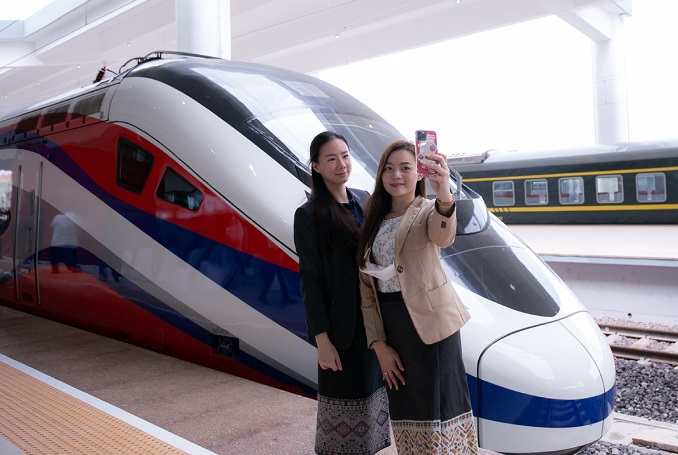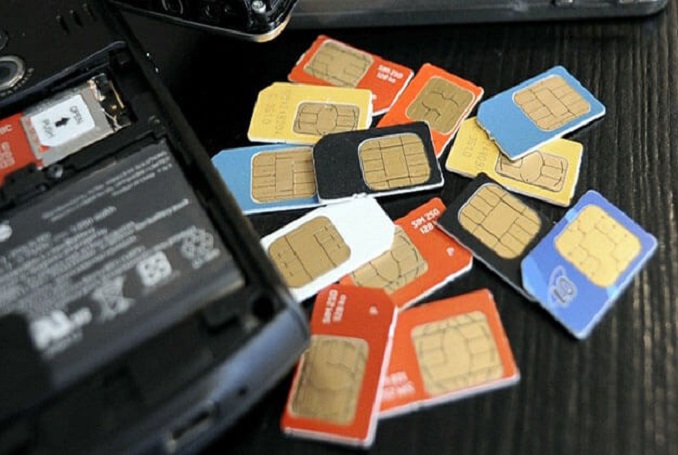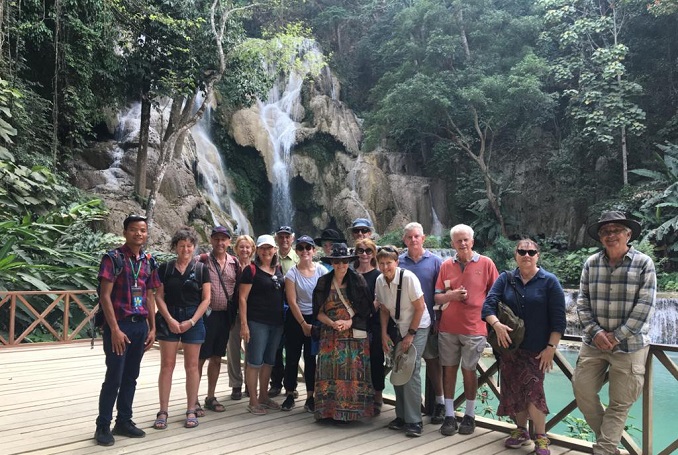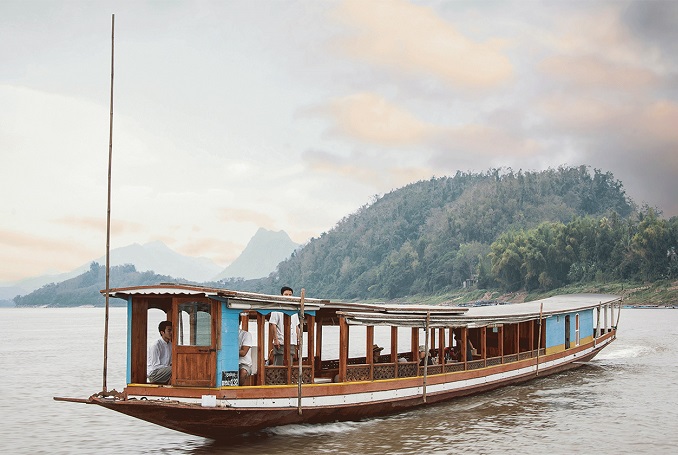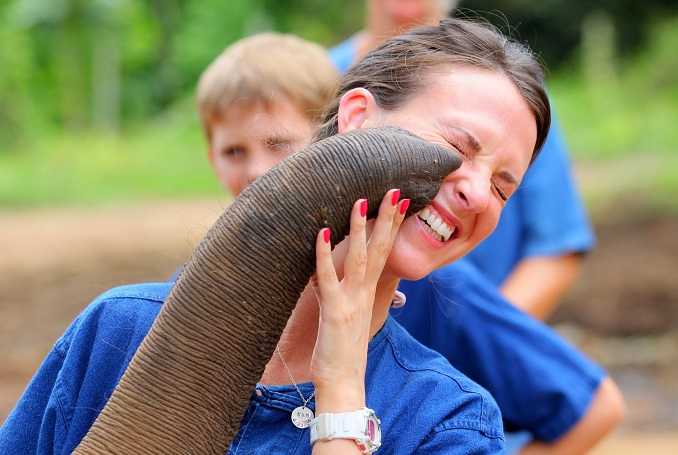Laos Festivals
Despite a communist takeover in the mid-1970s, the landlocked country of Laos remains a Buddhist nation in everything but name. Patriotic holidays are still celebrated, but only the Buddhist holidays entice the Lao people to really let their hair down. Authentic local food and strong drinks can be enjoyed during each and every festivity, as Laos' holidays are actually movable feasts (following local Buddhist tradition). Due to the variance between the Gregorian calendar (the calendar adopted by most of the world) and the traditional Lao calendar that determines local holidays, each celebration includes its approximate Gregorian equivalent.
Jan: Bun Pha Wet
Bun Pha Wet is a religious festival taking place in the whole country. This festival is hold in different dates in the first month of the year; therefore, Laotians can exchange invitation with their relatives and friends in different places to join in their celebration.
Bun Pha Wet Festival aims at commemorating Jakarta – the Lord Buddha and his life story. In Laotians’ belief, the Lord Buddha is Prince Vestsantara and his story is recited in many temples throughout the country. Bun Pha Wet Festival is a sacred time as it is considered as the advantageous time for the ordination as a monk. During the festival, Buddhist followers in Laos celebrate sacred ceremonies, prepare traditional food and enjoy great time with families and friends.
Feb: Laos Magha Puja (Makha Busa)
Magha Puja is another religious festival of Buddhist followers in Laos. Magha Puja takes place on the night of full moon day in February. People hold this festival to commemorate the original teachings of Lord Buddha for over one thousand monks.
Magha Puja is an important festival in national scale. In each festival, there is a grand parade of worshippers with candles on their hand walking around their local temples. On these days, Buddhist followers worship rice, flower, incense to the pagodas for merit making. Besides the parade, there are many religious performances and chanting for peace and happiness.
Feb: Wat Phu Festival
Wat Phu is an annual religious festival taking place on the full moon day of the third month in Buddhist Calendar (the same time with Magha Puja). Wat Phu Festival as its name is hold at Wat Phu Temple - one of the most long-standing and sacred Buddhist temples in Champassak Province of Laos.
Wat Phu temple has existed as a sacred religious center of Laotians since the early 10th century on the bank of Mekong River.
Being a national festival, Wat Phu Festival attracts people from Cambodia and Thailand joining in. It is not only a religious festival but also the time for surrounding population meeting each other and increasing mutual understanding.
During the festival, there are different activities of procession, recitals and chants. Besides, there are many exciting entertaining activities of boat racing; duck-catching game; volleyball and petanque competition. Interestingly, in the procession there’s the participation of elephant and buffalo which reflecting the culture of preferring agriculture in Laos. All traditional rituals, ceremonies and games are well preserved and maintained since the early days. Contrasting to sacred rituals in the morning, in the evening, Laotians often hold some concerts and perform traditional dancing and singing as an usual profane aspect.
Feb: Boun Khao Chi
During the third full moon in the lunar calendar, a festival is held to commemorate the original teachings of the Buddha to over 1,000 monks who arrived spontaneously to hear him speak. During the three days and nights of Boun Khao Chi (or Makhaboucha), worshipers circle their temples bearing candles and religious chanting fills the air. Locals take part in traditional dancing and sporting competitions, like volleyball and petanque (similar to bocce). Grand celebrations take place in Vientiane and at Wat Phou in Champassak, where the ruins of Wat Phu come alive with festivities that include buffalo-fighting, elephant racing, and Lao music and dance performances.
April 14 - 16: Bun Pi Mai
Boun Pimai (also called as Lao New Year) is one of the most bustling events of the year. Regularly, Boun Pimai takes place annually in April. Lao New Year last for three days; during these 3 days the whole country stops working and enjoying a great party.
Especially, in Luang Prabang, Boun Pimai last for three weeks as the whole population involved in frenetic activities of ceremonies, rituals, games and procession of Buddha statues. During the New Year, there are colorful and bustling parade of people in traditional costumes as parading as dancing and singing. Besides, traditional contests are also held in this time such as Miss New Year Beauty Contest, handicraft fair, and boat race on Mekong River. Lao New Year shares some similarities with New Year of Cambodians. New Year is the time for people to relax and enjoy the joyfulness, happiness and wishing for luckiness.
May: Boun Visakha Bu Saar (Full Moon):
Starting on the day of the sixth lunar month, this cerebration commemorates the birth, enlightenment and parinibbana (death) of Buddha. The festival is based and visitors can see chanting and sermonizing at night followed by beautiful candlelight processions.
May-September: Boun Bang Fai "Rocket Festival":
Various villages throughout the country take part in one that most boisterous festivals on the Lao calendar. This festival dated back to pre-Buddhist times and featuring home made rockets that are fired into the clouds to ask for rain as well as it amidst a great deal of raucous chanting and merry making.
September: Boun Haw Khao Salaack (Full Moon): Held during the 10th full moon of the lunar calendar, this festival is a celebration and a remembrance of the dead. During this festival, the Lao make offerings to the monks at the local Wat on behalf of deceased ancestors. Participant gives "good merits" to the devotes. Most of the people go to the temple early this day, with offering to the monks. Large food trays are brought to the monks, with several "best" dishes that families can cook.
All the people will bring that offerings with a piece of papers talking about ancestors that will be read publicly.
October: Boun Ok Phansa and Boat Racing Festival
The festival held after the end of the monks’ three-month fast and retreat during the rainy season (Boun Khao Pansa). At dawn on the first day, donations and offerings are made at temples around the city. In the evening, candlelight processions are held at temples and hundreds of colorful floats decorated with flowers, incense and candles are set adrift down the Mekong River to pay respect to the river spirit. The following day in Vientiane, Savannakhet and Champasack Province, a popular and exciting boat racing competition is held to celebrate the Mekong River.
Boun Khathin
This festival begins immediately after the last day of Lent, and lasts until the next full moon. During the one month period, devotes of the Buddhist faith help the monks to carry out their religious practice by making offerings of all their 9 requisites and other useful items.
November: That Luang Festival and Trade Fair in Vientiane Capital
This religious festival is held in and around That Luang Stupa, the National Symbol of Laos, where hundreds of monks gather to accept alms and floral votives from the people. The festival includes a grand fireworks display at night. During the day, an international trade fair, showcasing tourism in Laos and other countries from ASEAN and the Greater Mekong Sub-region. During the same period a similar festival is also celebrated at Ching Tim Stupa in Luang Namtha Province.
Laos Festivals,
Other articles
Lao New Year
Pi Mai Lao is also known as Lao New Year, is aLao festival celebrated at the hottest time of the year..
Read MoreFirst international passenger train on China-Laos Railway departs
The China-Laos Railway officially launched its cross-border passenger train service on April 13, with two international trains..
Read MoreWhat to do and where to see in Luang Prabang?
Adminre the rich architectural and artistic heritage that reflects the fusion of Lao traditional urban architecture with that of the colonial era
Read More15 Amazing Waterfalls in Laos
Laos is chock full of urban and rural tourist sites... , the country is home to many amazing waterfalls too
Read MoreChiang Rai to Chiang Khong Thai - Laos Border Crossing
If you’re heading from Thailand to Laos, there’s a good chance you’ll be following a rough route of...Chiang Rai to Chiang Khong. where you will find the Chiang Khong / Huay Xais border between Thailand and Laos..
Read MoreLaos Travel Ideas
Laos Travelling Idea?! These are the morst popular request and there are availble itineraries to send you imdiately, please do not hetistate to contact us
Read MoreLaos Hidden Gem
Laos is a beautiful country in Southeast Asia that is often overlooked by tourists. However, it is a hidden gem that is worth exploring.
Read MoreLuang Prabang Festival In 12 Months
The city of Luang Prabang in Laos is known for its vibrant and colorful festivals throughout the year. One of the most popular festivals is the Boun Lai Heua Fai or the Festival of Light..
Read MoreLaos Travel Guide
Laos Travel Guide, all question and answer for laos trip you may find here..
Read MoreThings to do and see in Luang Prabang
Luang Prabang is the Laos Capital and also often called the ‘Heart of Laos’ and many visitors choose to come here instead of Vientiane as it is known for its gorgeous countryside and scenic views across the majestic Mekong River.
Read MoreLao Language
Lao is a tonal language similar to Chinese and Vietnamese. Therefore, speakers of Lao and Thai can understand each other, although there are differences...
Read MoreHistory Of Laos
The ancestors of the Lao people were speakers of Southwestern Tai dialects that migrated from what is now southeastern China, specifically what is now Guangxi and northern Vietnam where the diversity of various Tai languages suggests an Urheimat..
Read MoreLaos Weather
For tourists Laos has two distinct seasons (wet summer and dry winter) but for Laos’s population there are technically three seasons; wet, hot and cold. As Laos is landlocked..
Read MoreThings to do in Vang Vieng
Things to do in Vang Vieng: You can spend 3-5 days in vang vieng and don't feel boring with a lots of activities such as Vang Vieng Tubing, kayaking, bikking, trekking..
Read MoreLaos - China Railway
The first passenger train set to travel along the newly completed China-Laos railway was delivered and operated in the Lao capital on Oct 15, 2021...
Read MoreWhich Is The Best Mobile Phone Operator in Laos ?
When providing our Relocation / Welcome Service, one of the first questions asked by our clients is: “Which mobile phone operator should I choose ?
Read MoreLaos Group Tours 's listed "10 Best Laos Tour Operators 2022"
Are you planning to visit Laos, but unsure which tour provider to select? Now, you no longer have to waste time searching the internet and filling out dozens of contact forms
Read MoreTripAdvisotr's Top Viewed Pictures Of Laos Attractions Taken By Customers
Below is the top beautiful pictures of Laos Attractions tacken by our customer which they put on TripAdvisor.com
To view large picture click on the picture
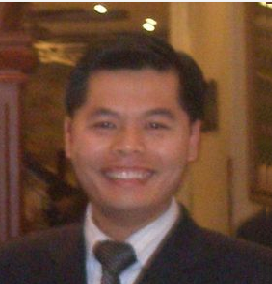 Do not hesitage to give us a call. We are an expert team and we are happy to talk to you.
Do not hesitage to give us a call. We are an expert team and we are happy to talk to you. 